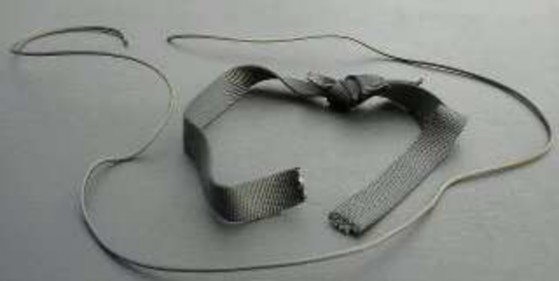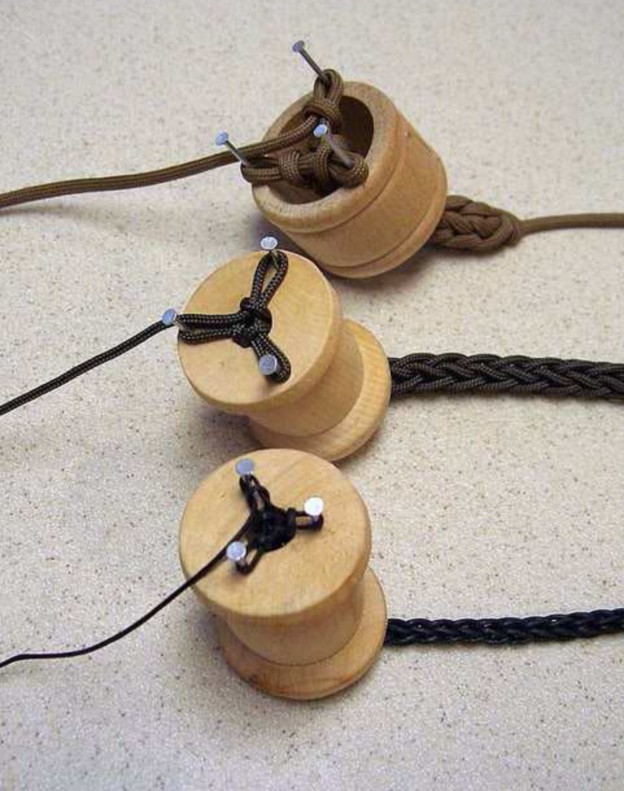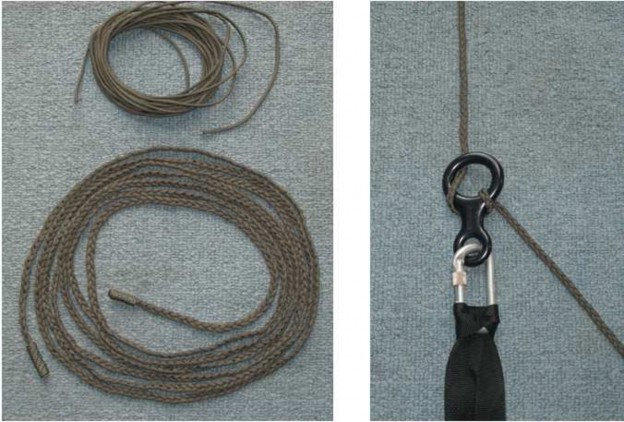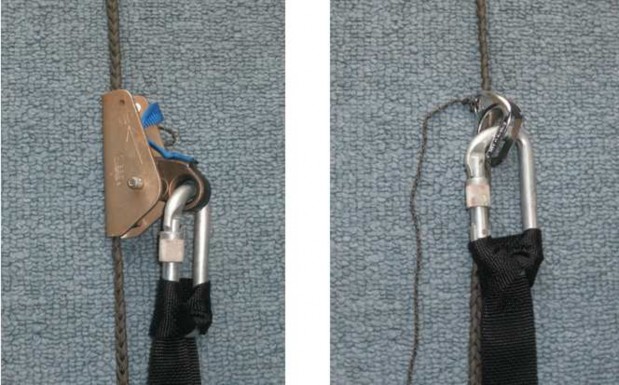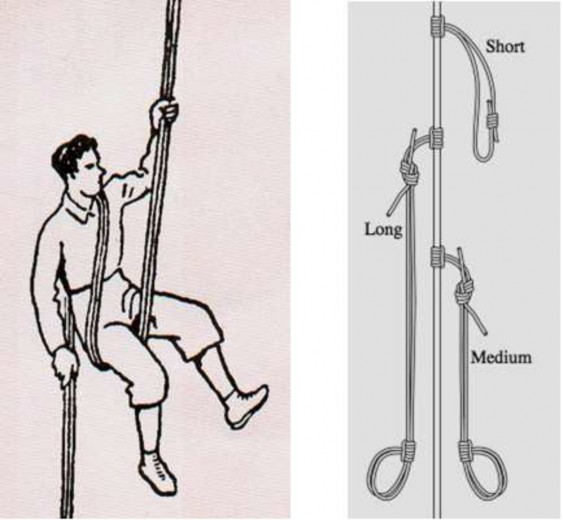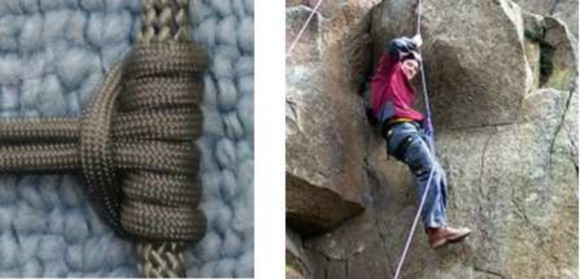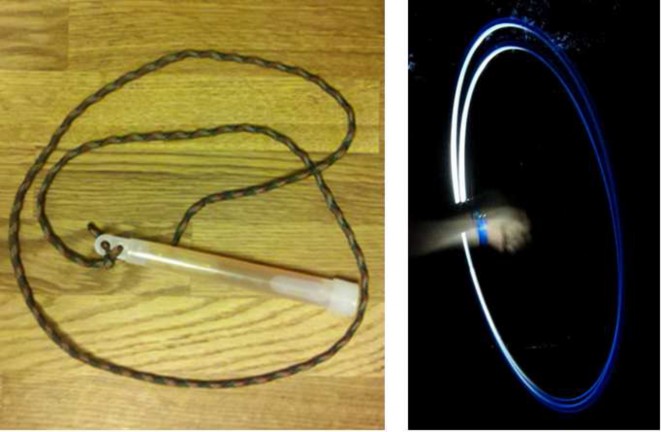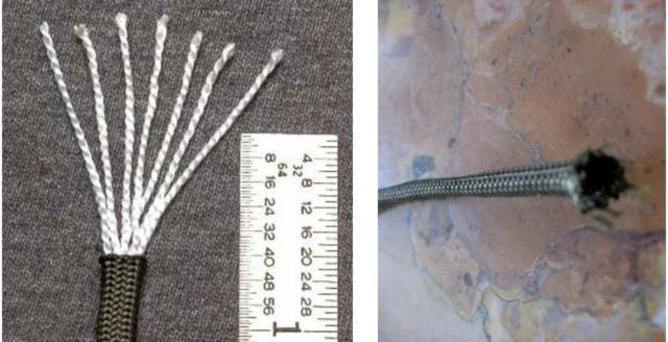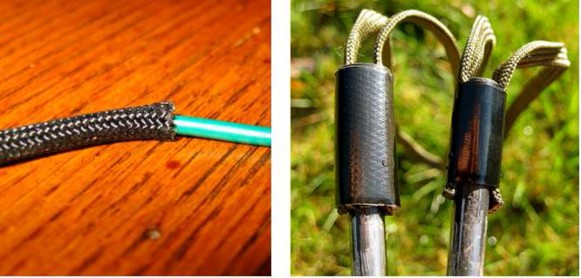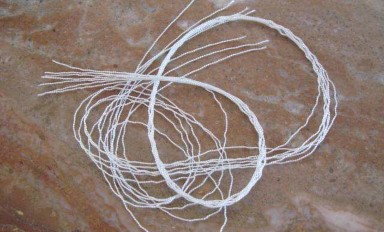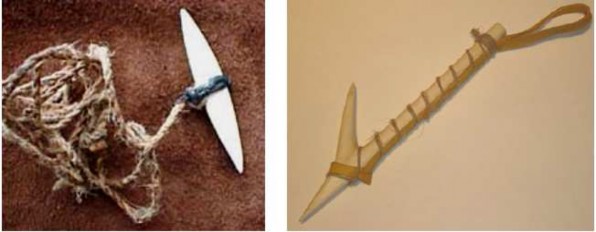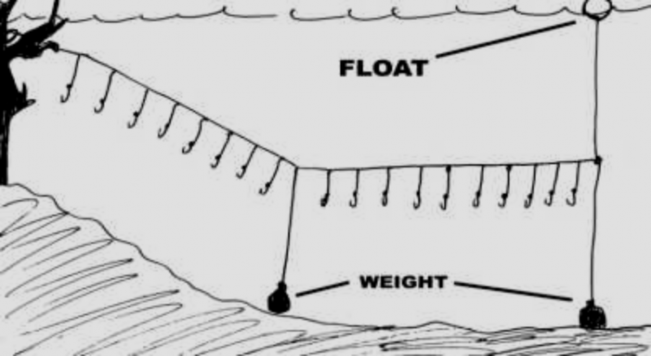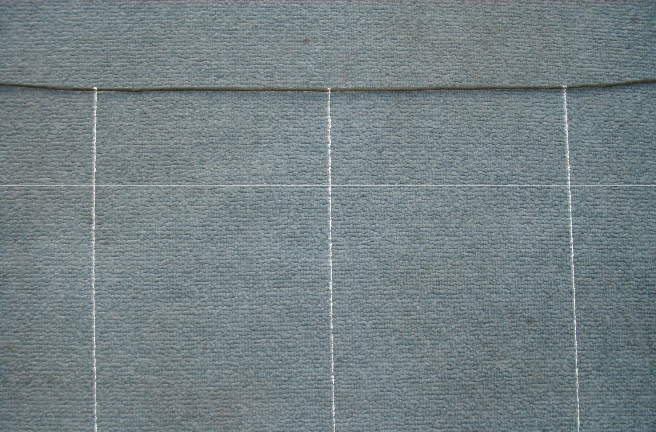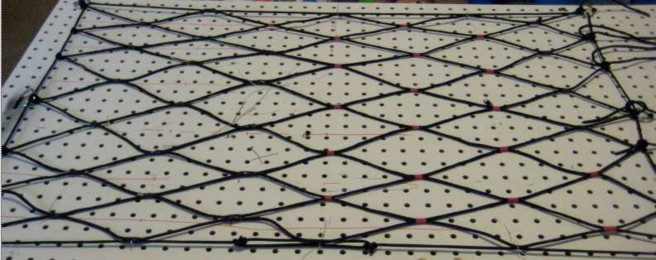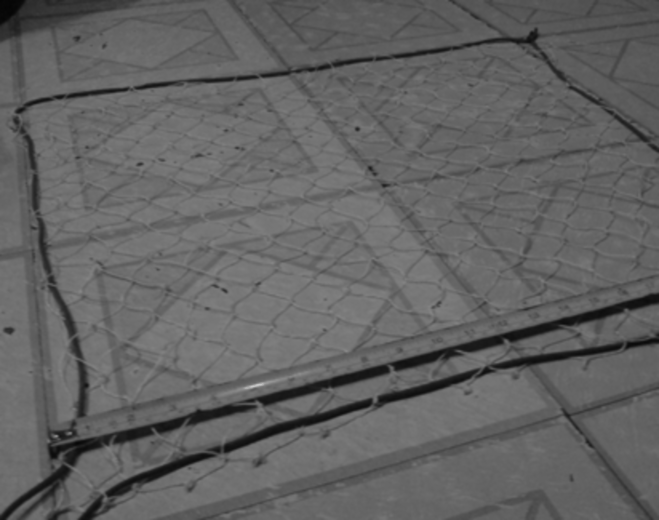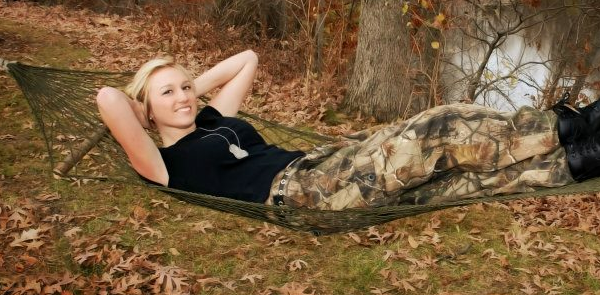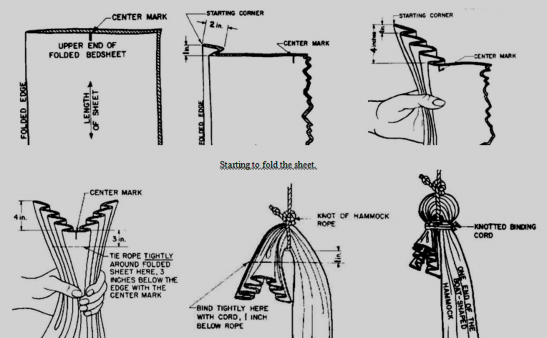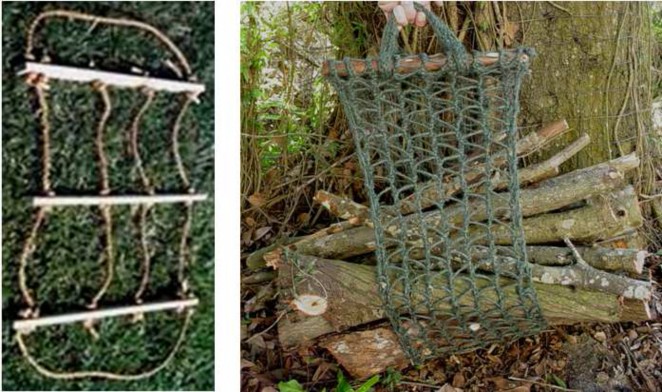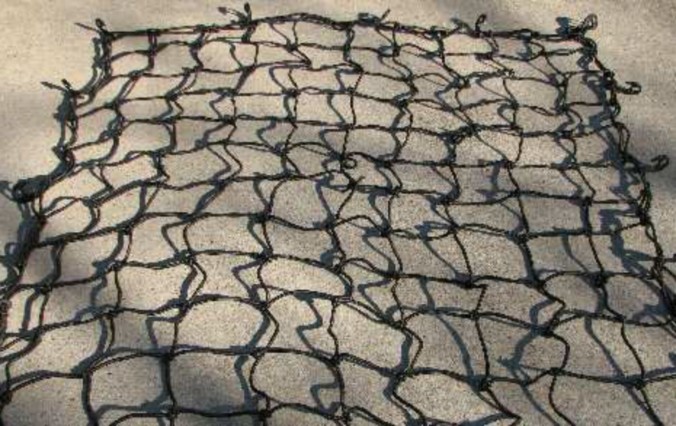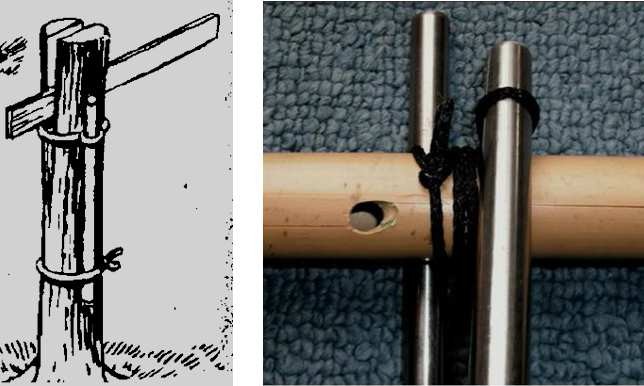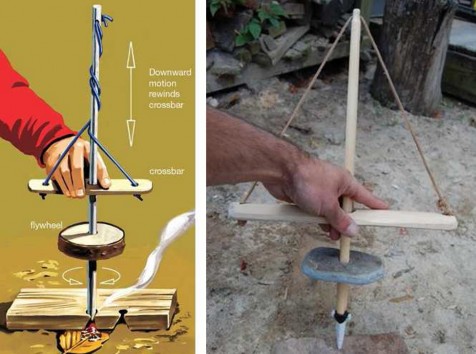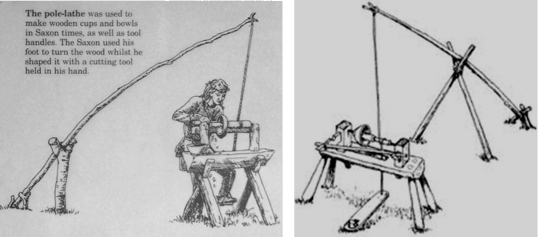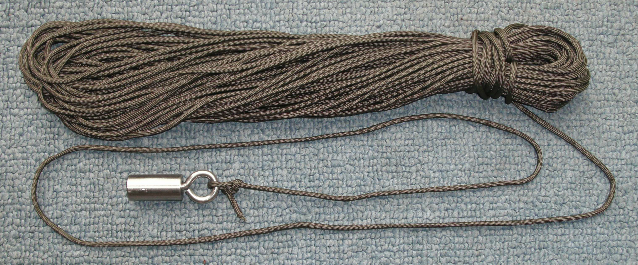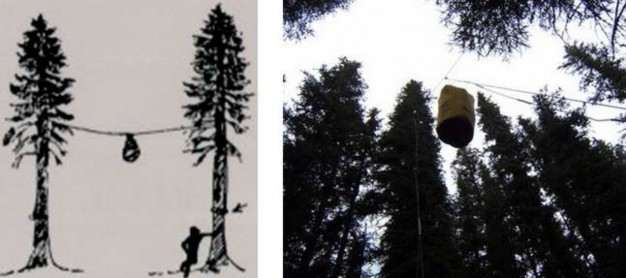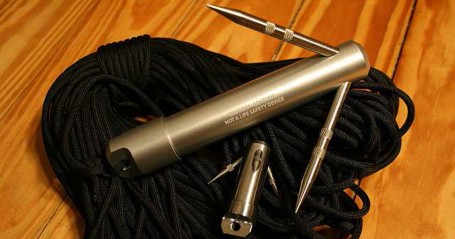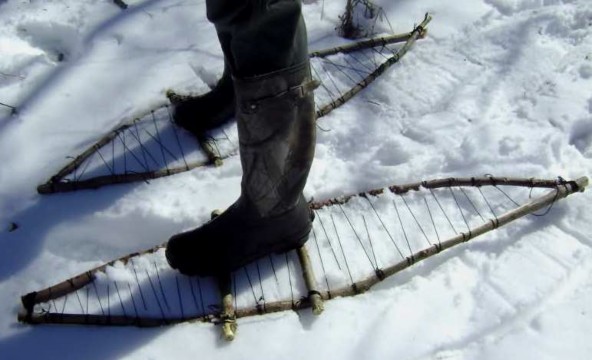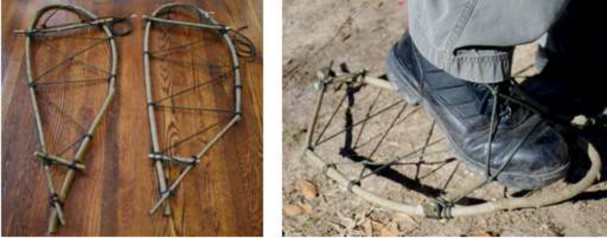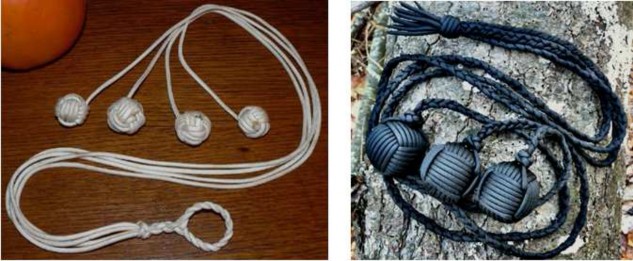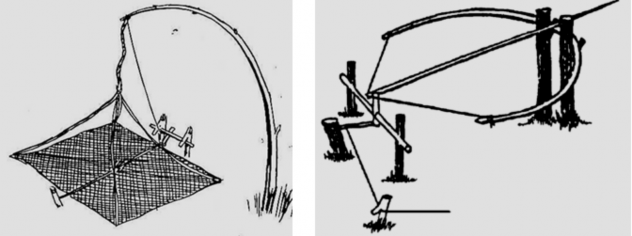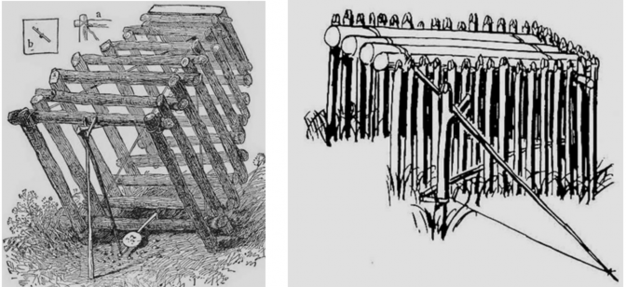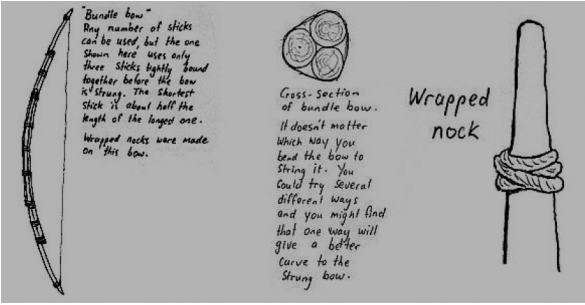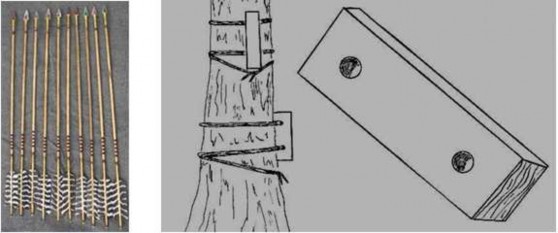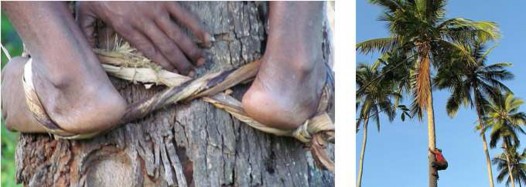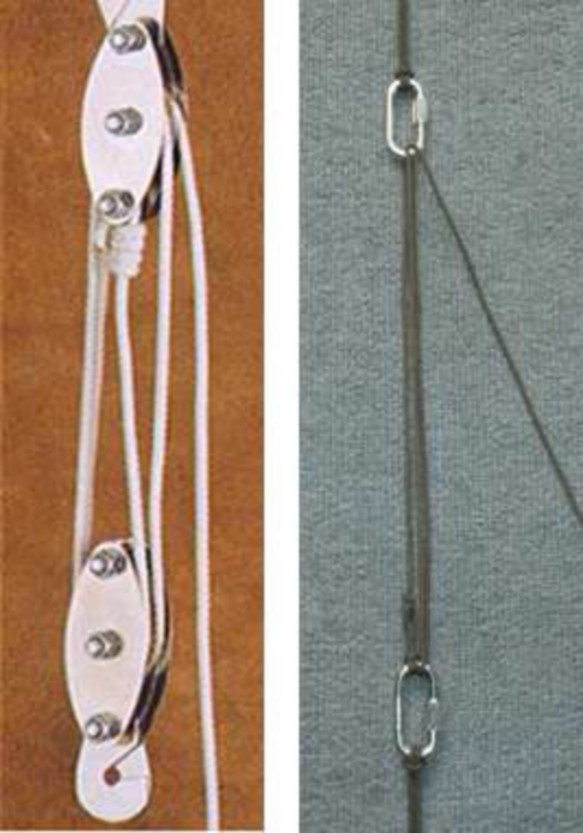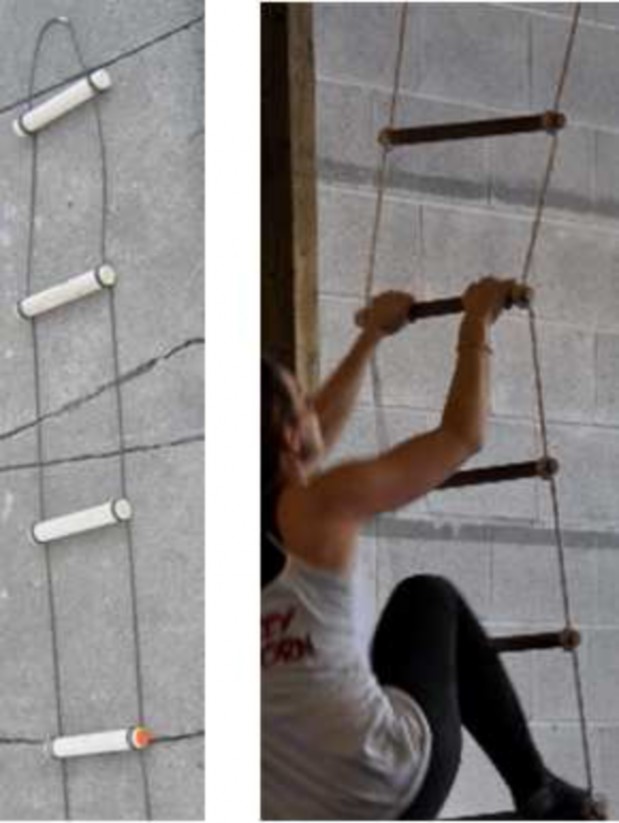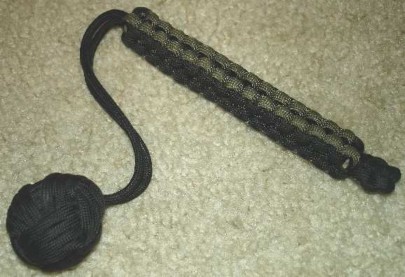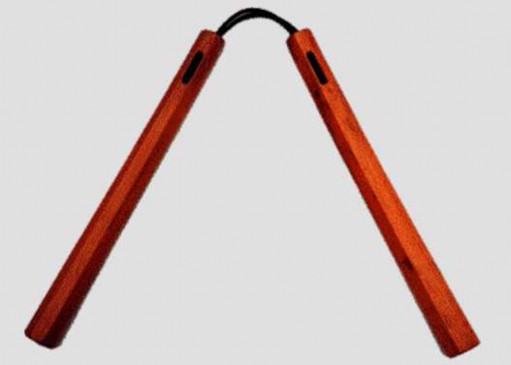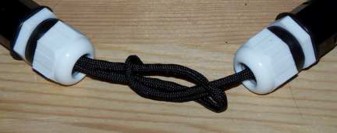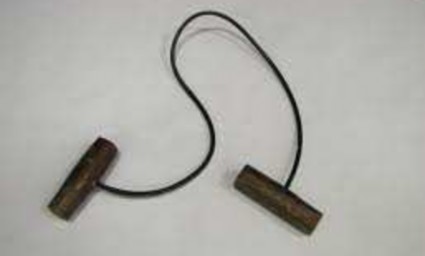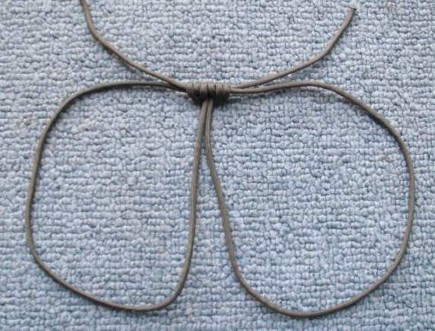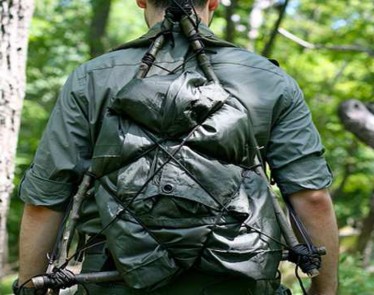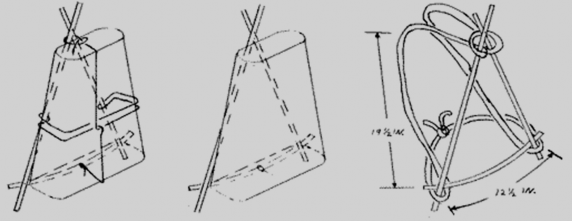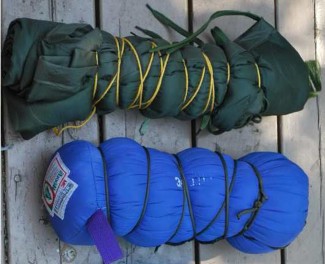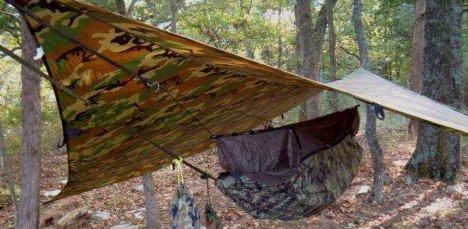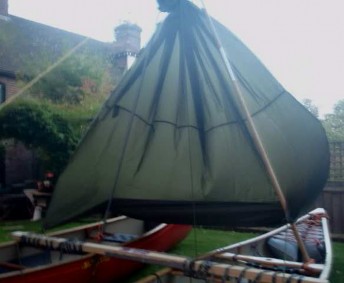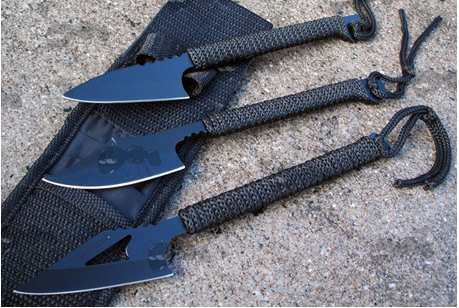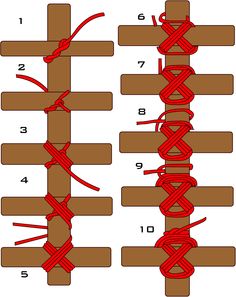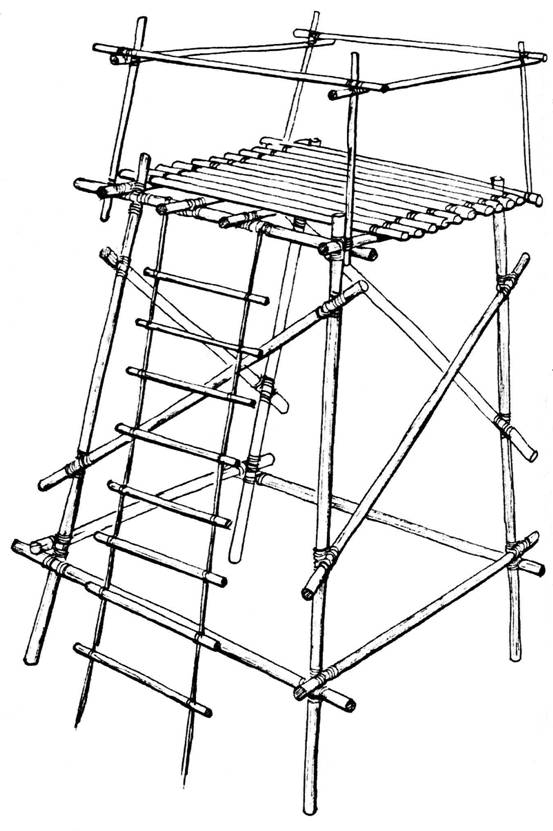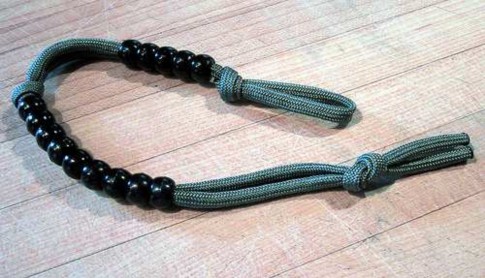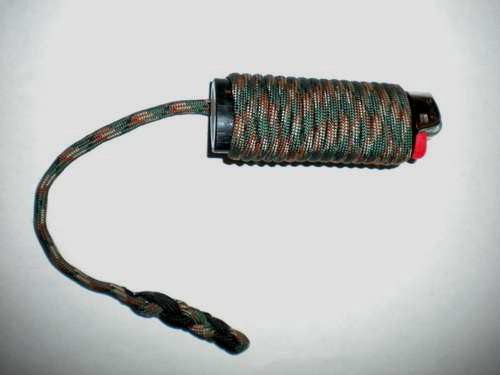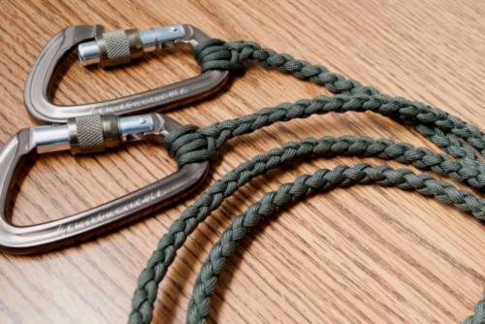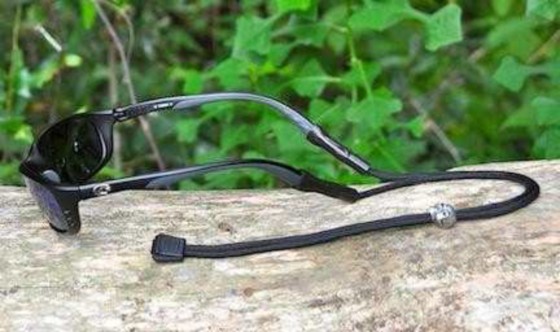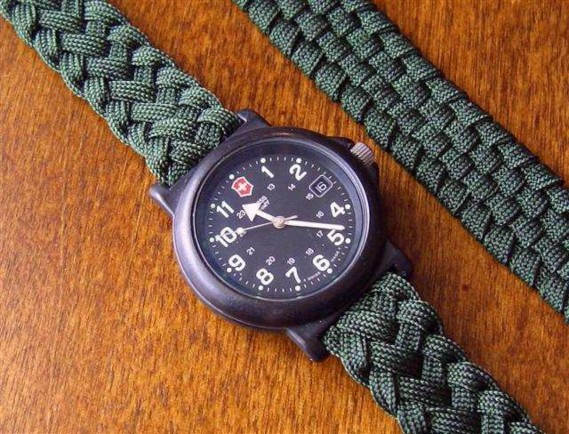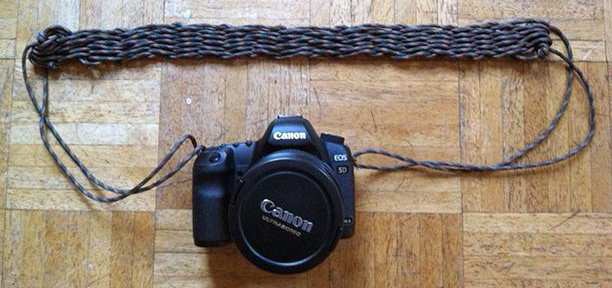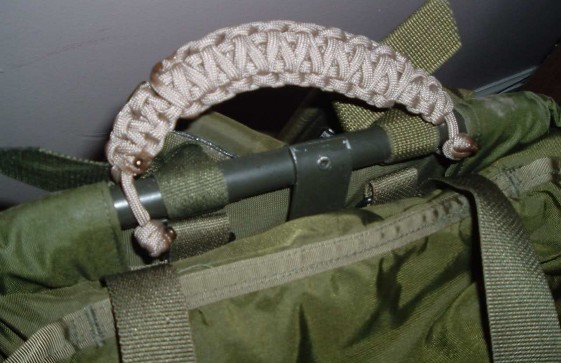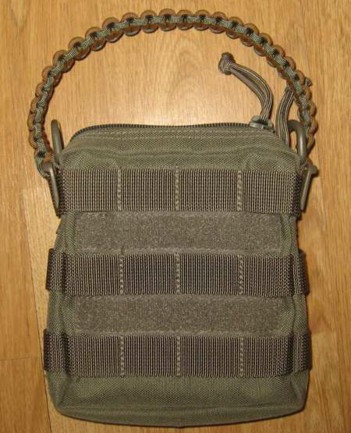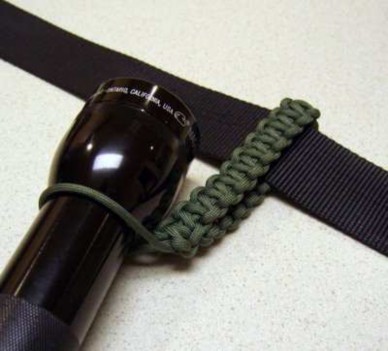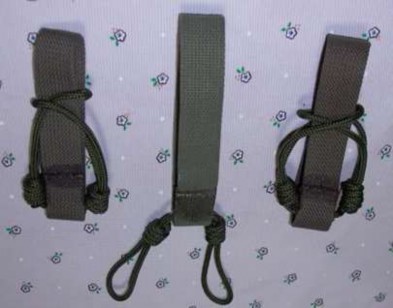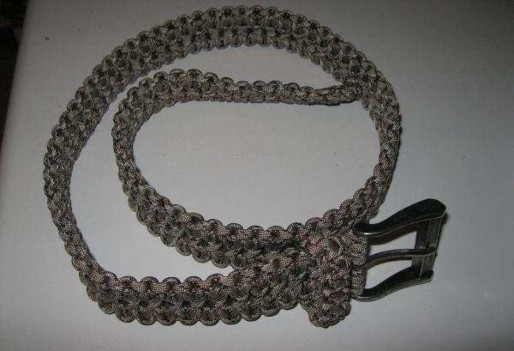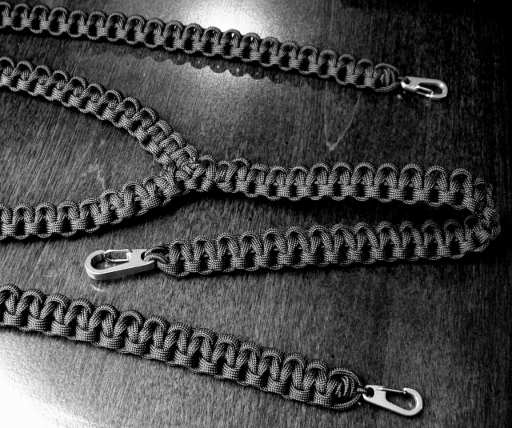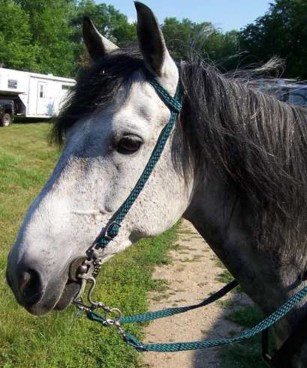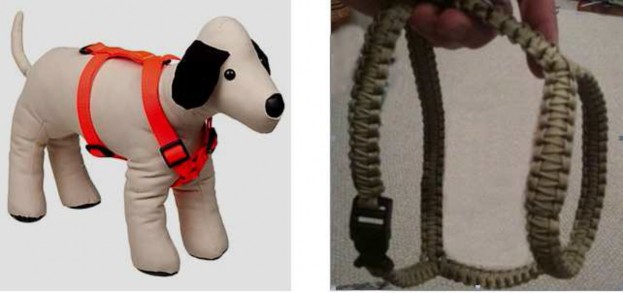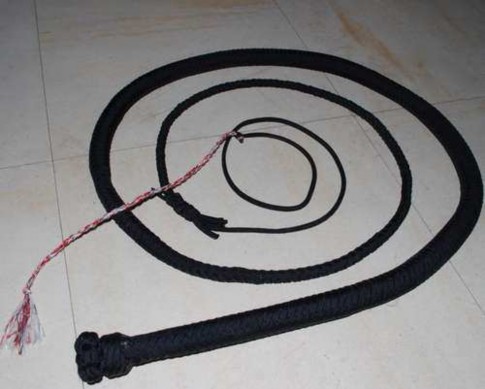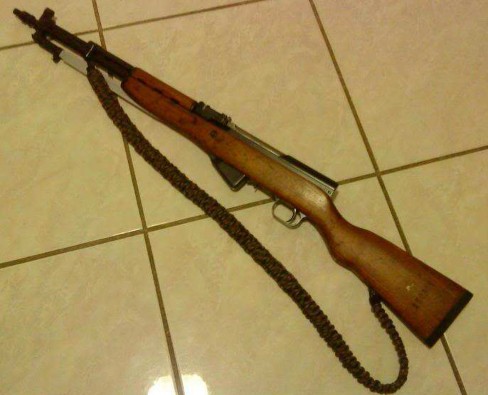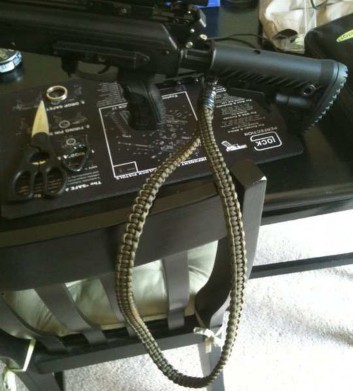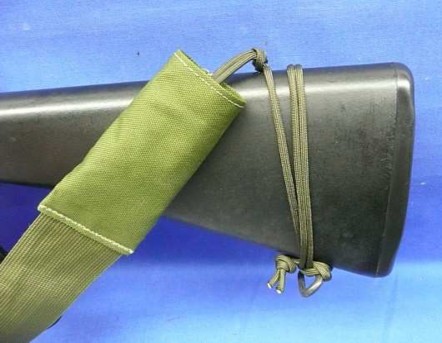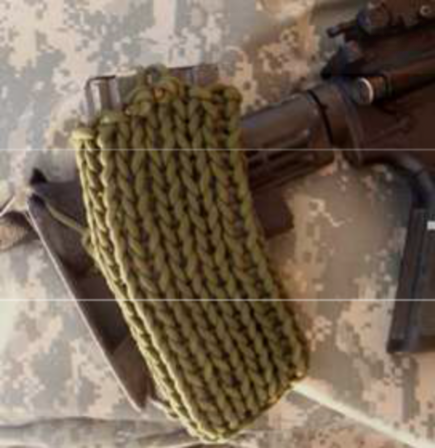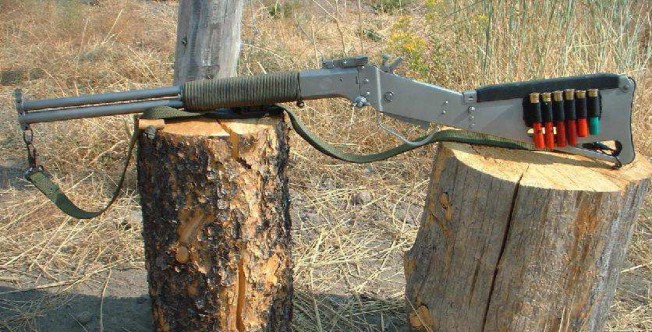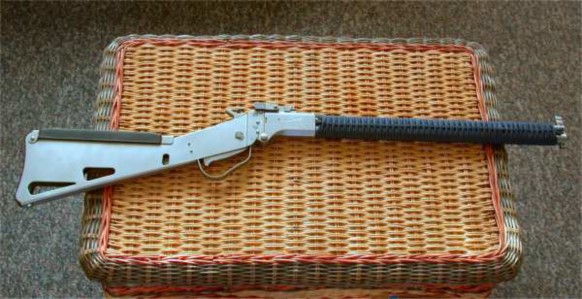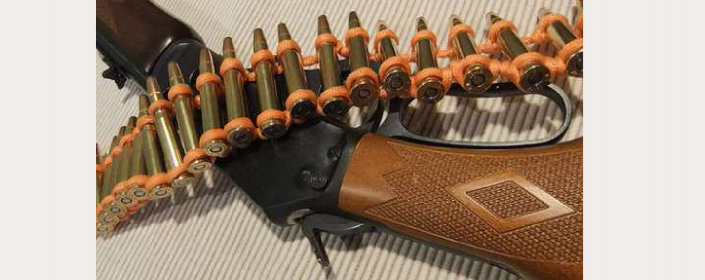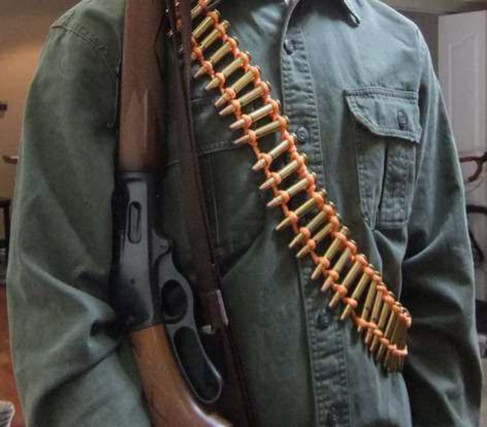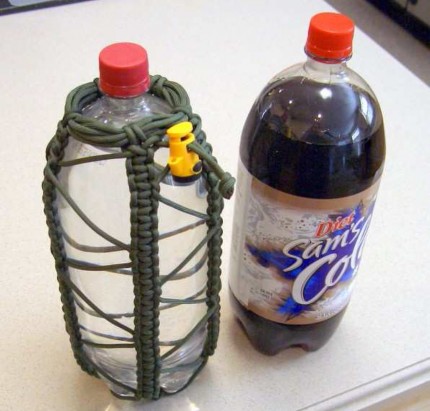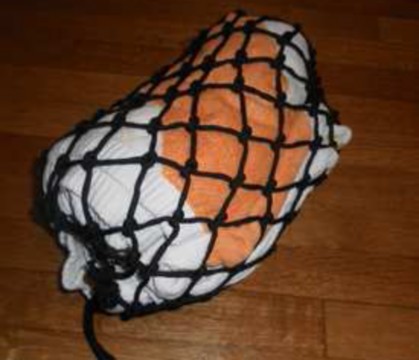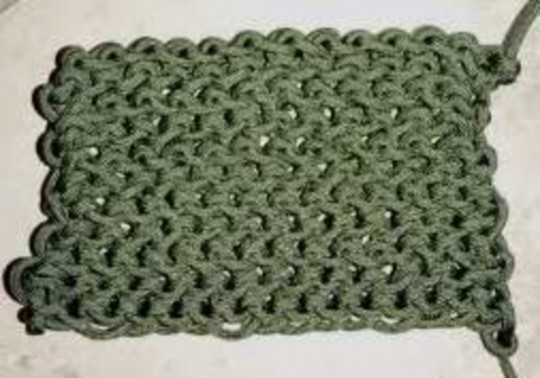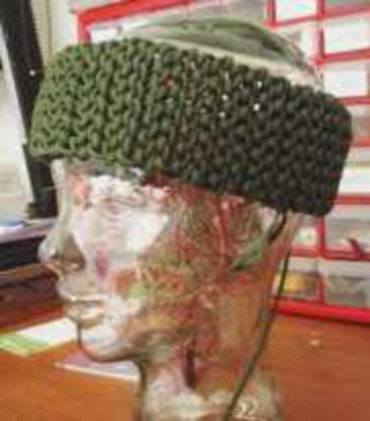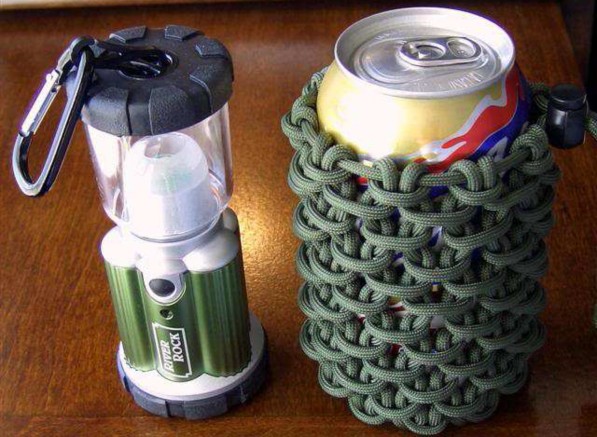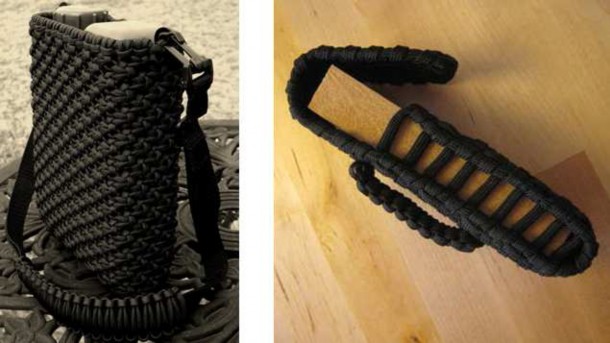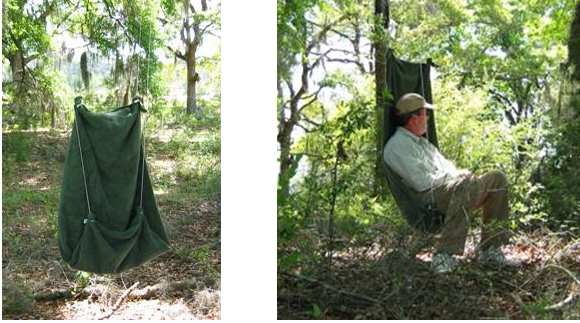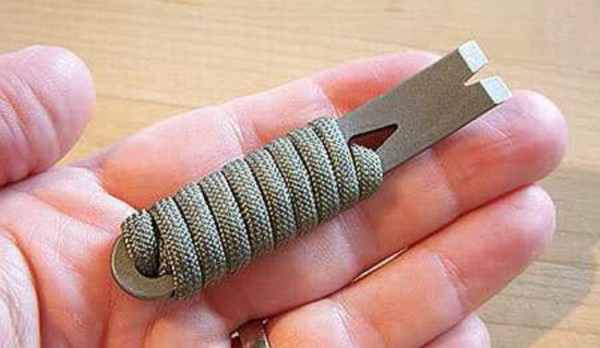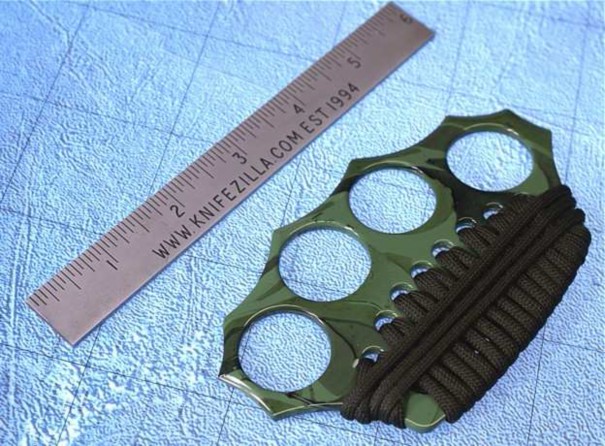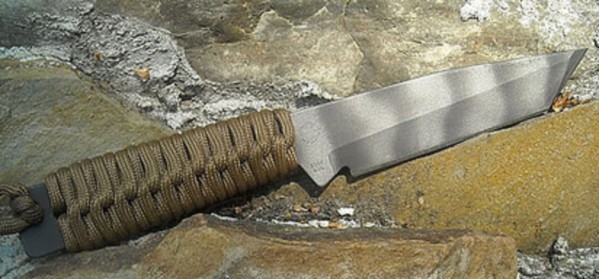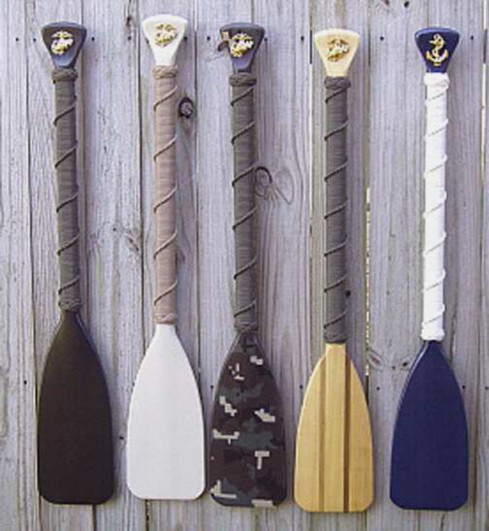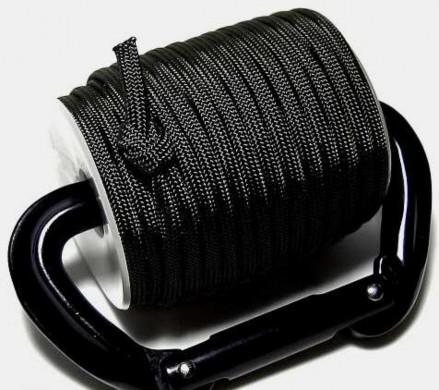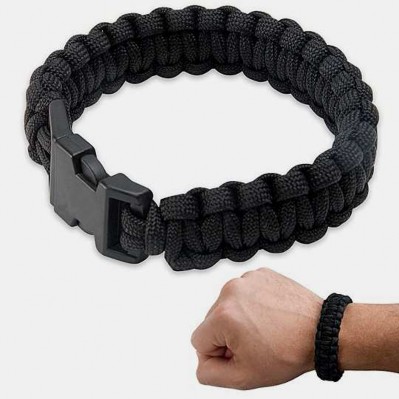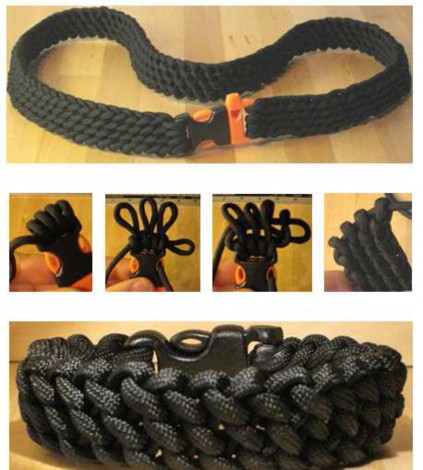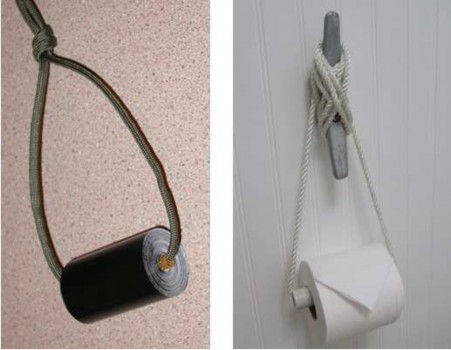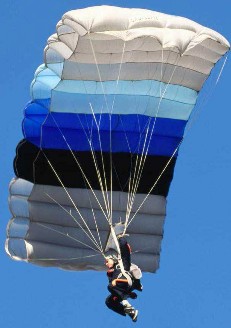Most people know that paracord is a handy item, with lots of uses. In fact, there are hundreds of possible uses for this cordage, making it a valuable addition to any collection of survival equipment and supplies. Here is a list of over 100 uses for paracord, to show just how versatile it can be, and people are always thinking of more.

Paracord is so useful that you may want to buy it in bulk, for camping and survival.
Because paracord is available in many different colors, it can be tied onto packs, duffle bags, ammo cans, tools, weapons, and many other types of equipment, to identify multiple items by color-code.
Paracord can be used as a cutting tool (friction saw). A length of cord can be used to cut through another length of paracord, or similar items, such as nylon straps. Just saw it back and forth, and it will melt its way through.
Going Up: If you have enough cordage, you can create larger-diameter rope by braiding paracord, either by hand, or by using a simple braiding jig, like these examples. Since paracord has a weight limit of 550 pounds, the resulting ropes will have a weight limit of 550 times the number of cordage strands in each type of braid.
Three lengths of paracord can be braided together as shown here, creating a rope that will hold 1650 pounds. This rope is adequate for many survival uses, such as an emergency rappel to escape a burning building, etc..
The braided rope can also be used for climbing, using ascenders, such as the gibbs or tiblock shown here.
If you have paracord but no other climbing gear, you can still rappel using the traditional body rappel technique, and climb by using the traditional prusik knot climbing setups shown here. Not as safe or easy, but still possible.
Paracord is strong enough to use as the prusik knots needed for improvised rope climbing.
Lightsticks can be tied to a length of paracord and swung around at night, for emergency signaling.
550 paracord is rated to hold 550 pounds. The individual components of parachute cord consist of the paracord sheath, with a rating of about 300 pounds, and the 7 inner strands, each with a rating of about 35 pounds.
(The inner strands are made from twisted pairs of smaller strings, each with a rating of about 17.5 pounds.) Each of these components has a number of possible uses, alone or in combination.
The outer sheath is a strong tubular webbing that will support over 300 pounds. The sheath can be slipped over electrical wires to provide extra insulation and abrasion resistance. It also makes good lanyards for small items.
The inner strands can be used to make improvised snares, fishing lines, sewing thread, dental floss, gill nets, small lashings, emergency sutures, trip-wires, and any other use that a strong string could be used for.
Two types of improvised fishhooks, which use small cords as attachment points.
A perfect use for paracord is the construction of improvised trotlines.
An improvised trotline is made from paracord by removing the inner lines. The sheath is used as the main line, and the inner strands are used as the drop lines. Add a hook and weight to each drop line, then set it and bait it. Trotlines can be set from bank to bank, or from float to float, or between submerged (concealed) anchor stakes.
Paracord could be used to make a fishing net, but it would take about 200 feet of cord to make a four-foot by eight-foot net, with three-inch square openings. Not the most efficient use of cordage, for this application.
A better way to make fishing nets is to use the paracord sheath as the border of the net, and to make the netting from the inner strands. This requires less total paracord, and results in a fine net that is very similar to a gill net
Paracord can be used to make a very strong hammock, but this would require a lot of cordage.
Another way to make a hammock is to use paracord to tie a strong cloth, to make a boat shape.
Here is how to tie the ends of a strong cloth, to make a boat-shaped hammock.
Paracord can be used to make improvised firewood carriers, to make this common camp task easier.
A good use for full-strength paracord is making cargo nets, and net traps for large game animals.
A simple clamping tool (bushcraft vise-grips) can be made, using inner paracord strands as the lashings.
A very similar tool makes a good knife-sharpening guide.
An improvised vise, called a stump vise, is made from a green sapling cut at a convenient height and split, with paracord and a stick used as a tourniquet to provide the clamping force. Another clamping tool, made from a short length of paracord (or other cordage) with a loop at each end, and two lever sticks, is useful for squeezing split bamboo poles closed, so that the split area can be tied shut by placing lashings around the split sections.
Paracord makes an excellent thong for use with a friction fire bow drill.
The pump fire drill and pump hole drill can also be made with paracord as the pump cord.
Simple machines, such as the pole lathe shown here, can be made using paracord as the spring-pole cord.
A small weight and a length of paracord make a handy throwing line.
A throwing line makes it easy to hoist food into trees, to protect it from bears and other hungry critters.
A small grappling hook can also be used with paracord, as a throwing and retrieval tool.
Improvised snowshoes can be made from sticks, using paracord for the lashing, webbing, and bindings.
I like this design for a sling (the basic rock-throwing weapon), made from a single length of paracord.
Paracord can be tied around stones (or lead fishing weights) to make bolas, a primitive throwing weapon.
There are many types of traps which use cordage, and paracord is suitable for constructing any of them, such as: snares, deadfalls, net traps, bow traps, box traps, fish traps, set guns, booby-traps, and perimeter alarms.
Paracord is useful for making primitive archery equipment, such as the bundle bow, and the inner strands make good lashings for arrowheads, fletchings, and for reinforcing the nock areas of your improvised hunting arrows.
Improvised tree steps can be made from lumber or split wood with two holes drilled as shown, then lashed to the tree trunk with paracord, wrapped around the trunk twice, so it will self-tighten when weight is applied.
Another tree-climbing tool, used in the tropics to climb coconut trees, is a figure-eight shaped loop of vine or bark cordage used to help the feet grip the tree trunk. Braided paracord can be used to make this climbing aid.
Paracord can be looped through two chain repair links, or two carabiners, to make an improvised hoist.
Paracord is strong enough to make a simple rope ladder, using sticks or lengths of dowel.
Braid three cords together, if you need a stronger ladder.
An improvised sap can be made from paracord tied around a lead fishing weight.
Nunchucks are easily made by joining two sticks, or pipes, with a short length of paracord.
Two sticks with paracord loops at the ends can be slipped together, to make instant nunchucks.
Paracord is strong enough to use as a garrote.
If you are feeling non-lethal, it can also be used to make improvised restraints.
Paracord makes good replacement boot laces, and can also be used to make sandal straps.
You can make an improvised pack from three sticks, lashed together with paracord.
Here is how to make the three-stick pack. The shoulder straps can be made from braided paracord.
Paracord can be used to compress ponchos or sleeping bags, so that they take up less room in your pack
Another good use for paracord is to suspend a tarp over your hammock, while camping.
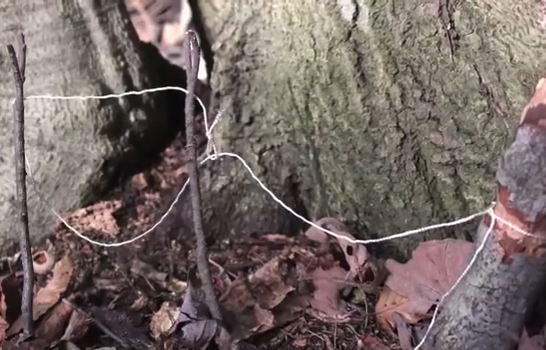
Paracord can also be used to make a snare trap .
You can use paracord to lash small boats together to make catamarans, and to rig improvised sails. Paracord has an almost endless series of boating uses, such as rigging, lashing, hoisting, and anchoring.
Paracord is good for lashing Hoffman Harpoons to spear shafts, for survival spear-fishing. 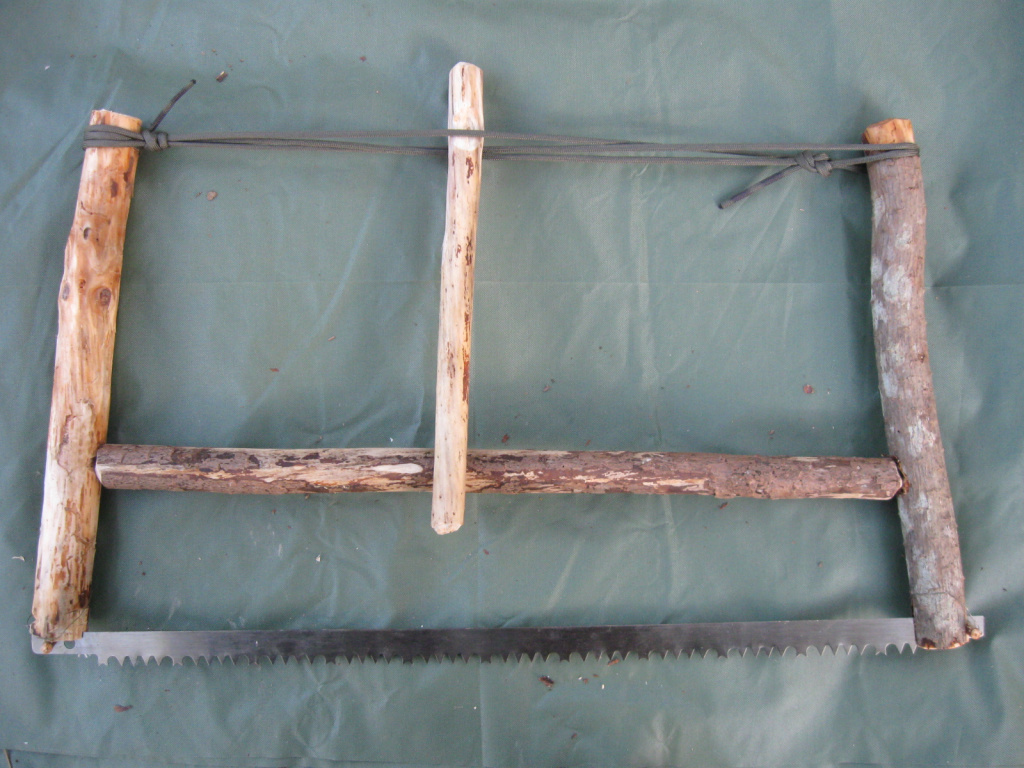
It can also be used with sticks and a bow saw blade, to make an improvised buck saw.
Paracord can be used as an emergency tourniquet
You can construct any of the traditional pioneering projects, such as camp furniture, bridges, or towers, using paracord as the cordage, and using the standard lashing knots, such as the square lashing or diagonal lashing.
Pioneering projects are fun and useful, and the designs are shown in my other articles.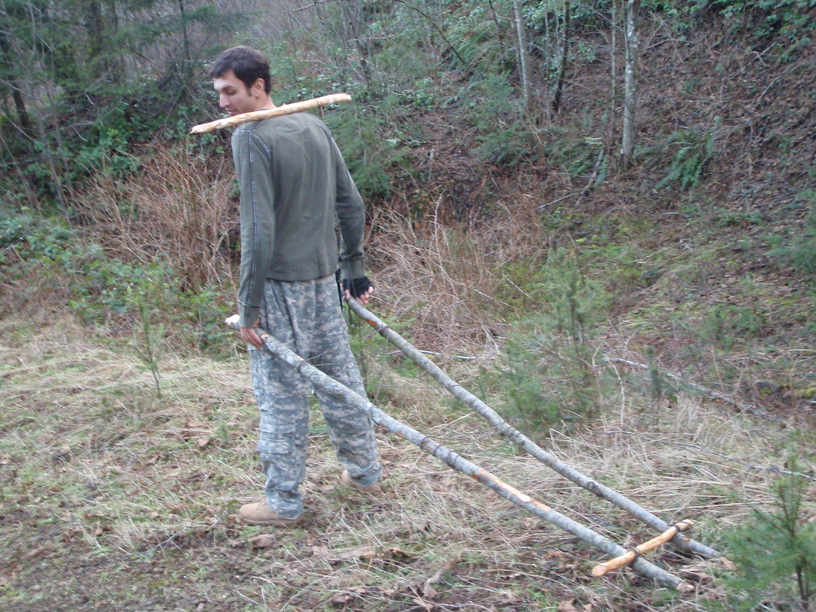
Paracord is strong enough to lash together an emergency stretcher, for medical evacuations.
Here is a set of Army Ranger-style pacing beads, that can be made from paracord.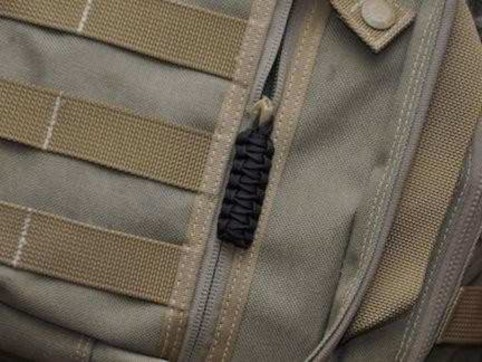
Braided paracord makes effective zipper pulls, for coat and pack zippers.
Any small item, such as a key, is easier to find in your pocket (or purse), with a paracord lanyard.
If you hate losing your lighter, make a paracord lanyard for it.
One easy way to tether objects is by using a length of braided paracord, with a carabiner on each end.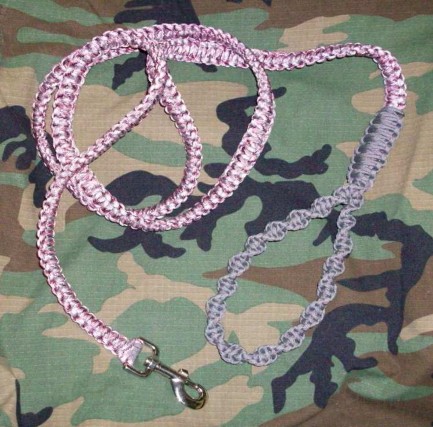
Another use for braided paracord is this handy dog leash.
The empty paracord sheathing makes good neck lanyards, like this sunglasses strap.
Paracord (or the empty sheathing) can be braided into flat straps, like these watch bands.
Here is a braided paracord camera strap.
Braided paracord can be used to add extra handles to your packs or bags, wherever needed.
Here is a surplus pouch, with a braided paracord handle added.
This paracord item is a flashlight hanger for your belt.
These strap and paracord game hangers are used to tie birds or rabbits to your belt, while hunting.
Here is a paracord belt, made using the same braiding techniques as for other paracord straps.
These suspenders are also made from braided paracord.
Both halters and bridles can be made for your horses, using paracord.
If you need a harness for your dog, you can braid one from paracord.
Paracord can even be used to make a bullwhip, for herding cattle.
You can make an improvised sling for your rifle, using paracord.
Here is another paracord sling. This one is the single-point style.
Paracord can also be used to secure your sling to your rifle, like this example.
You can even use paracord to make an improvised magazine pouch, like this one.
You can wrap the fore-end of your rifle with paracord, for use as a heat shield.
Paracord can also be used as an improvised bayonet mount.
Here is an improvised bandolier, made from two strands of paracord with a series of simple slip knots.
The bandolier is a simple way to carry extra ammo, if you don’t have military field gear.
Empty soda bottles, plus paracord, equals improvised canteens.
Paracord can be used to make net bags, for holding dirty laundry, etc..
Need a potholder for camp cooking? Just crochet one from paracord.
This headband was made from paracord, using the same crochet technique.
Paracord can be used to make holders for many small items, from lanterns to light beer.
Here is a paracord canteen cover, and a paracord knife or multi-tool pouch.
You can combine paracord with a large towel, to make an adjustable hanging tree chair.
Paracord also makes strong webbing, for use in woven beach chairs.
Paracord can be used to wrap the handles of tools or weapons, to give them a better grip.
Knives with paracord-wrapped handles have become very popular lately.
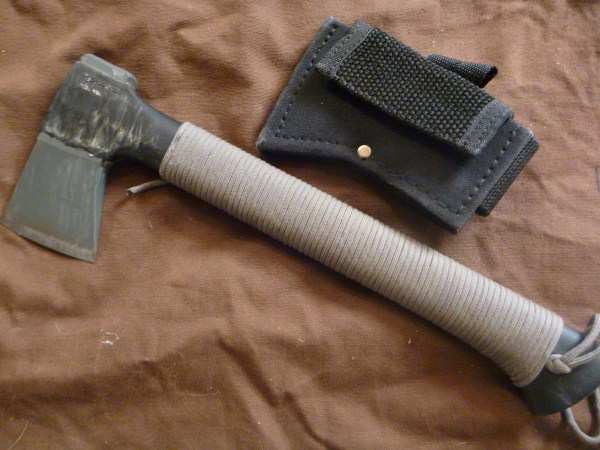 Paracord can improve the grip on a tool handle, and it is always available to remove, for other uses.
Paracord can improve the grip on a tool handle, and it is always available to remove, for other uses.
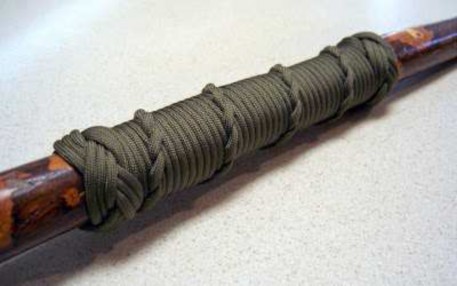
Some people like to use paracord to make a hand-grip on their hiking sticks.
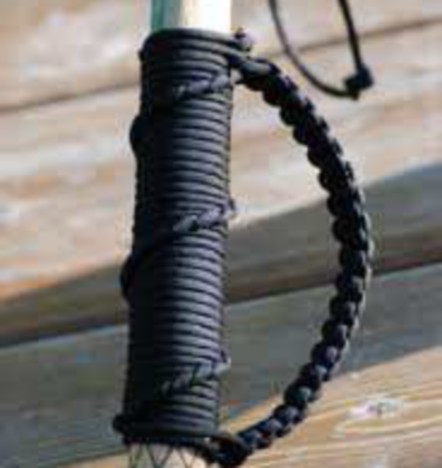
The hand-grip can also have a retaining strap added, if desired.
Check out these paracord-wrapped canoe paddles.
Here is a design for a paracord camp clothesline,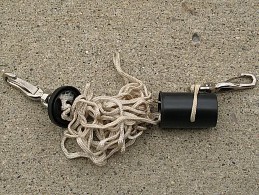
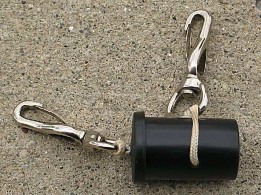 which stores in a small plastic canister.
which stores in a small plastic canister.
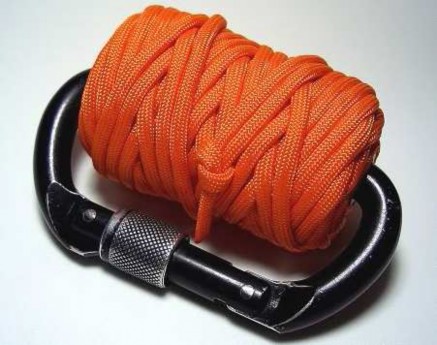
One use for paracord is to find a way to keep a supply of it handy, until needed. These two carabiner dispenser rolls of cord are one way to meet that need. (The plastic spool was cut in half, and then taped back together.)
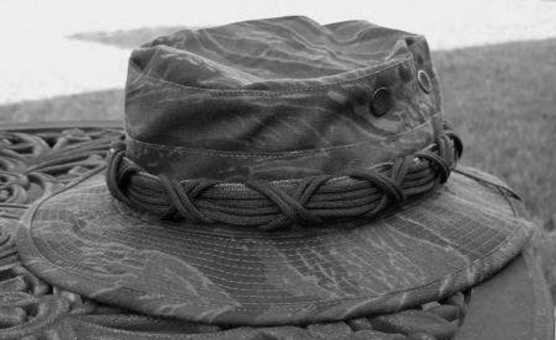 Another way to keep some paracord handy is to add a length of it to your favorite hat, like this.
Another way to keep some paracord handy is to add a length of it to your favorite hat, like this.
This paracord bracelet can also be unraveled, to supply you with a bit of cordage when needed.
I like this style of quick-unravel paracord belt; it is easier to untie than other designs.
Paracord can also be used as the hanger for a roll of repair tape, or a roll of any other desirable item.
That is a lot of uses for paracord, but here are just a few more:
Paracord (or the inner strands) can serve as a pull-through line, for gun cleaning.
You can use paracord to tie back weeds, brush, or tree limbs, to create sniping or hunting loopholes.
Make an improvised shooting rest; tie paracord between two supports (trees, etc) to rest the rifle’s fore-end on.
Paracord makes a good improvised gun retention tether. Tie a bowline loop at one end of an arm’s length of cord, then slip this loop over your arm and up to your shoulder. Put on a coat or jacket, and the cord stays in place. Now tie the other end to your weapon. It can also be used to hang a weapon down a sleeve or pant leg.
When hunting, tie the animals front and back legs together on each side to form handles, for easier carrying.
Paracord is great for replacing the strings in sweatpants, as a cord for drawstring bags, or as leg ties for knife sheaths and gun holsters.
It can be used to tie splints in place on a broken limb, and can also be used as a tourniquet.
It can be used as a guideline for moving in dark caves, blizzard conditions, or other low visibility scenarios Paracord can be used as a line for a dog run, or tied between two trees to make a horse hitching line.
Paracord can be used as a knotted measuring line, or a plumb line.
An emergency fan belt; wrap cordage tightly around the fan pulleys several times, and tie lots of knots around these loops of cordage, to make a single thick, knotty cord, which will help to reduce slippage while in use.
A 1000 foot roll of paracord makes a great gift, for campers, outdoorsmen, and preparedness-minded folks.
Knot Work: There are hundreds of kinds of knots you can tie with paracord, as well as hitches, lashings, braids, plaits, and weaves. See the 600 page “Ashley’s Book Of Knots”, for ideas.
And Finally: You can use paracord to make emergency repairs to your parachute lines, or you can cut up your parachute lines to obtain emergency cordage.
